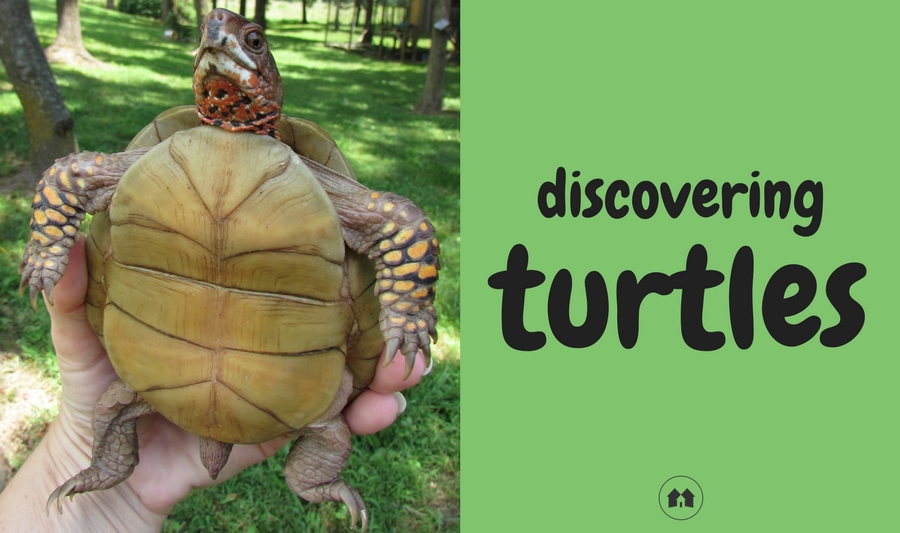Turtles and toads were some of the very first creatures I was enamored with as a child. They were close to the ground—thus at my level—and neither one moved too swiftly to catch. When I was small, my pop made me a tiny turtle pen out of wire that encircled a tree. When I found a particularly amiable turtle, I could keep it in the pen for a few days, feeding and playing with it. Then it would get released back into the woods—probably much to its relief!
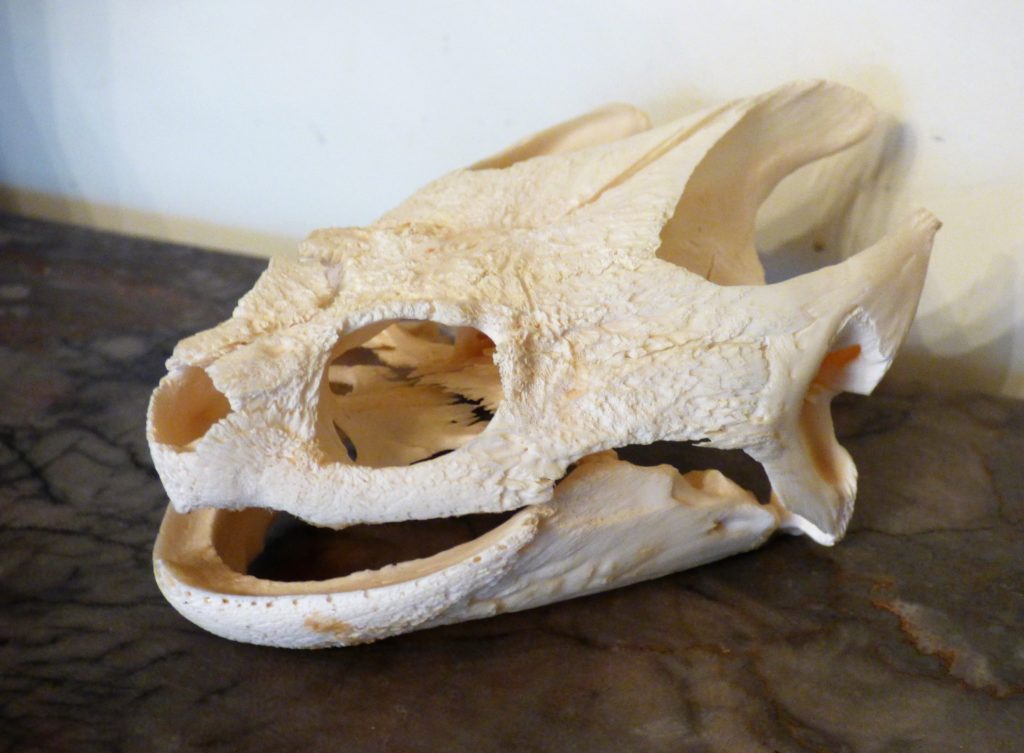
Turtles don’t have any teeth, just a hard bill-like mouth almost like a bird’s, and it’s great fun to watch them eating strawberries and other fruit. (If you do have a chance to feed a turtle, be sure to give it fruits and veggies that have not been sprayed with any type of chemicals; most grocery store items wouldn’t be good for a turtle unless they are organic.) The majority of land turtles are herbivorous, but will eat the occasional worm or bug. Water turtles eat worms, fish, frogs … anything they can catch.
I love turtles and I am often saddened to see so many killed on our roadways (and yes, I’m one of those people who will stop along the road to run back and “rescue” a turtle that is in danger of being struck in traffic). When I was younger my pop and I would simply bring these creatures back to the farm with us, certain that our large acreage and bountiful woods would be a the perfect safe haven. In later years, I read that turtles are much like the indigenous tribes of the world. They have a very small range and are not exposed to many others of their kind. When you take a turtle from one area to another (like relocating it back to our farm), you can expose it to turtles with diseases to which it does not have immunity. These days, I still try to rescue turtles, but now I simply take them to the side of the road where they were headed and make sure they are well off the pavement.
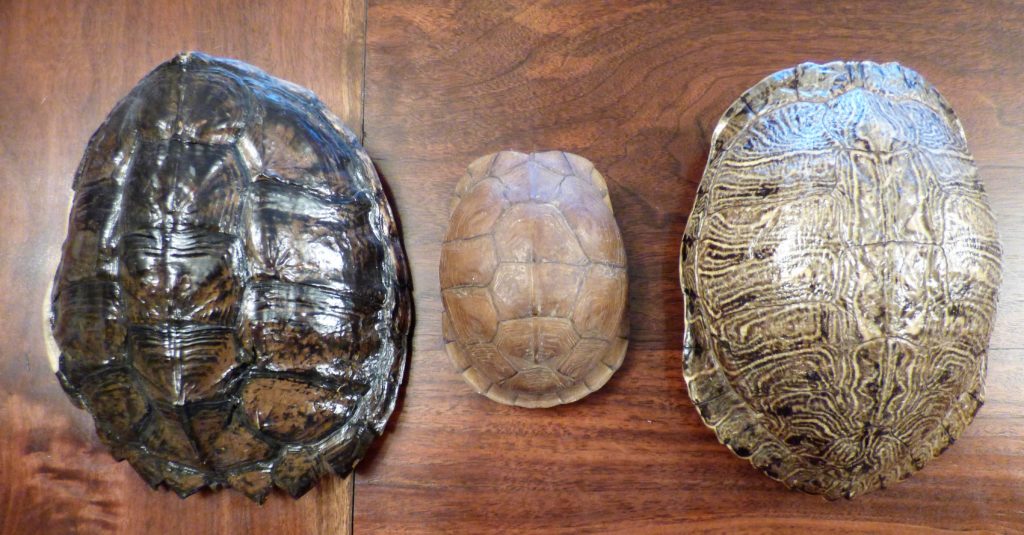
When deciding whether or not to pick up a turtle, it is always good to note the species. Water turtles can bite if they feel threatened. Snapping turtles will bite and also have very long claws that can rake you. Even the most docile, the common box turtle, can scratch if its nails reach your hands. Remember, these animals aren’t being bad or mean. Can you imagine if a scary giant picked you up? I know I would bite and scratch to get away! And, please, never pick up a turtle by its tail in an effort to stay safely away from the claws. This was once an accepted technique, but now we know that it can actually break the turtle’s spine. If you are unsure about holding one, simply enjoy watching it.
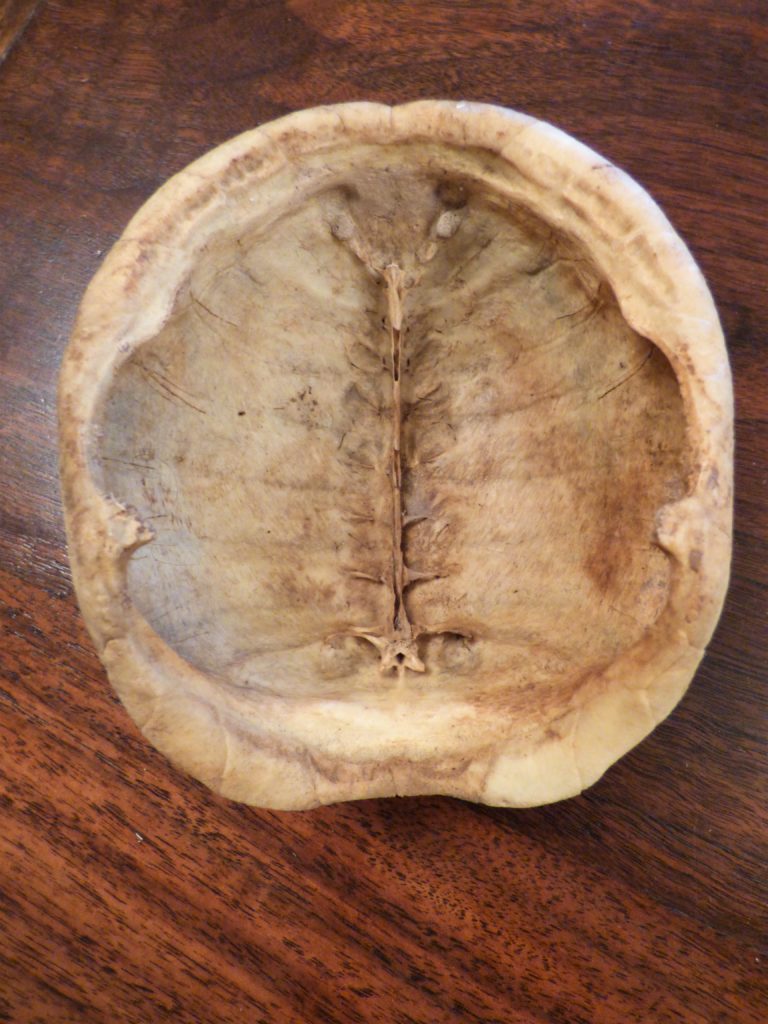
All turtles lay eggs in a nest, then leave the young to hatch. Turtle eggs are round and leathery, unlike the brittle oval chicken eggs we are used to. The eggs hatch and the babies are on their own. Box turtle hatches are so rarely seen that there’s really no information on how many young can reach adulthood. But in sea turtles, experts estimate that one in a thousand will survive to find a mate.
All baby turtles are born with an innate instinct that baffles scientists: the ability to find water. Here on our farm, we often find snapping turtle hatchlings far from any water source. They are stoically making their way toward it, guided by instinct and hoping not to meet any predators on the way.
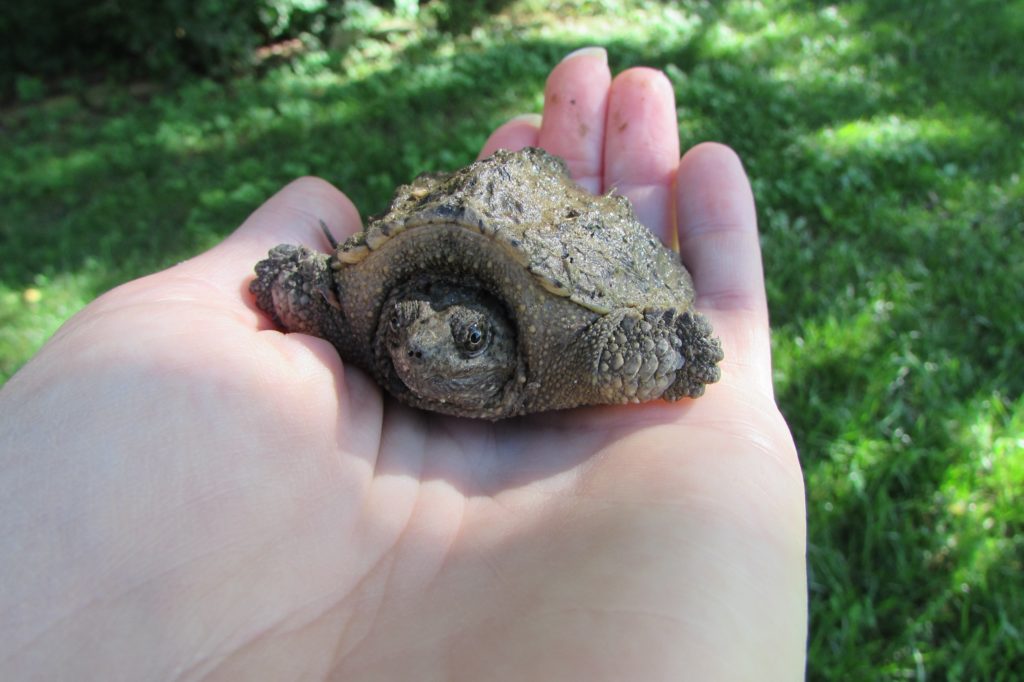
Turtles are one of God’s humble little miracles. Scientists have marveled for centuries at the skeletal construction of a turtle. Imagine that you are a turtle. Your spine (backbone) is fused to a massive shell that is the covering for all of your internal organs. Your ribs are also a fused to the shell. Your front legs hinge from the upper shell while your tiny pelvis attaches the back legs. Your legs stick straight out the sides so that you must waddle in a side to side scuffle. Scientists long wondered how a turtle could physically pick itself up and walk with such strange construction. But God is perfect in his designs, and the little box turtle is so strong that it can lift 200 times its own weight! This would be equal to an adult human carrying 10 cars on their back.
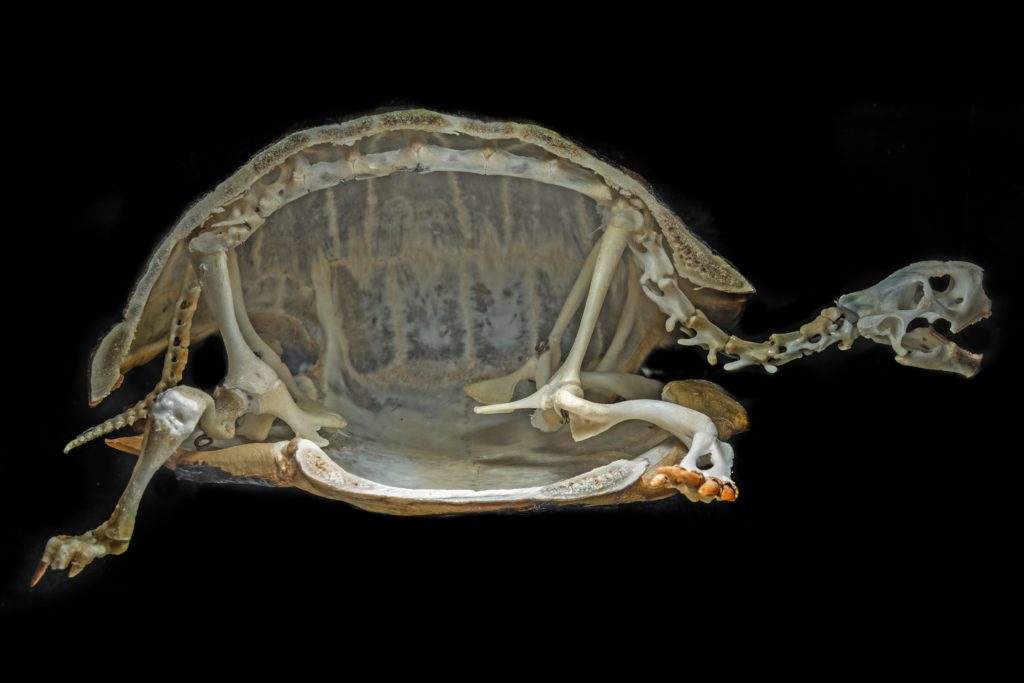
The turtle is tiny and mighty—and talk about tough! Turtles fossils have been found all the way back to the Cretaceous period. Imagine a turtle crawling slowly past a T-rex or Velociraptor! There are many species of turtle today that are believed to live to one hundred years or more. One turtle, a giant tortoise named Jonathon, is 183 years old and going strong. (To know more about him, look here.)
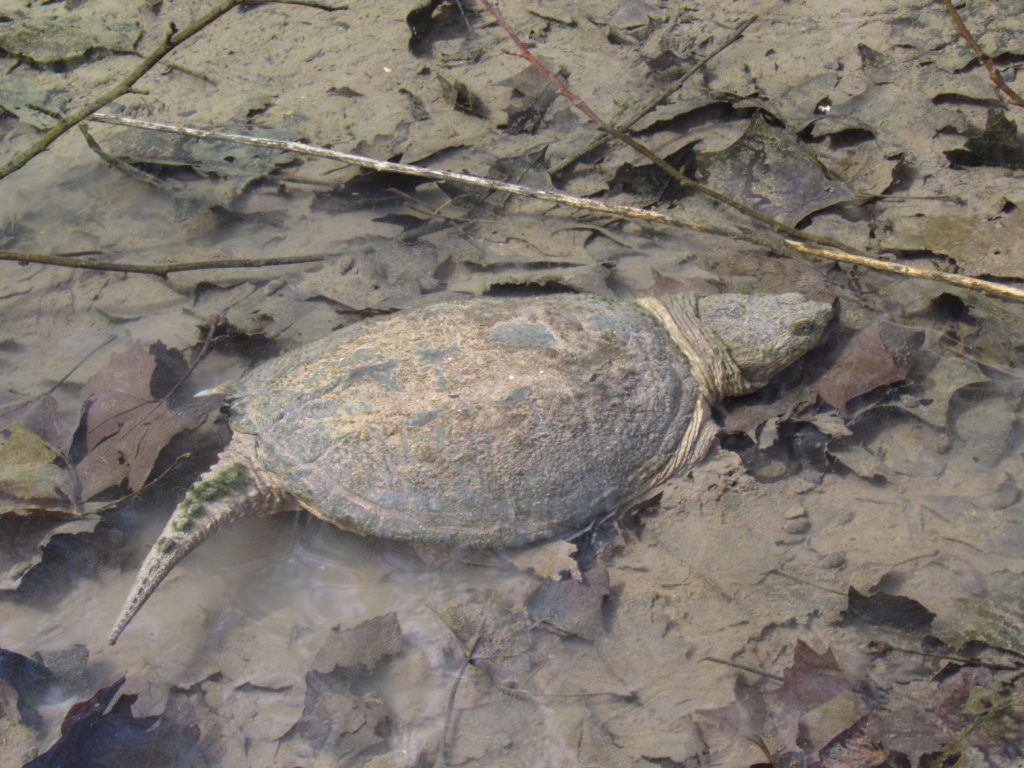
Just because these creatures carry around a suit of armor to protect them, and once lived among dinosaurs, doesn’t mean that they can’t be hurt. Busy roads are a serious hazard to land turtles, while fishing nets and boat propellers are deadly dangers for aquatic turtles. And simple human thoughtlessness can cause harm. Once people believed it was fun to carve the date into a turtle’s shell so they could see how long it could live. Now we know a turtle’s shell is so sensitive that they enjoy being rubbed and scratched on it, just like a pet cat.
These ancient creatures are a wondrous remnant left from prehistoric days, and with our help and care they will be with us to the very end!
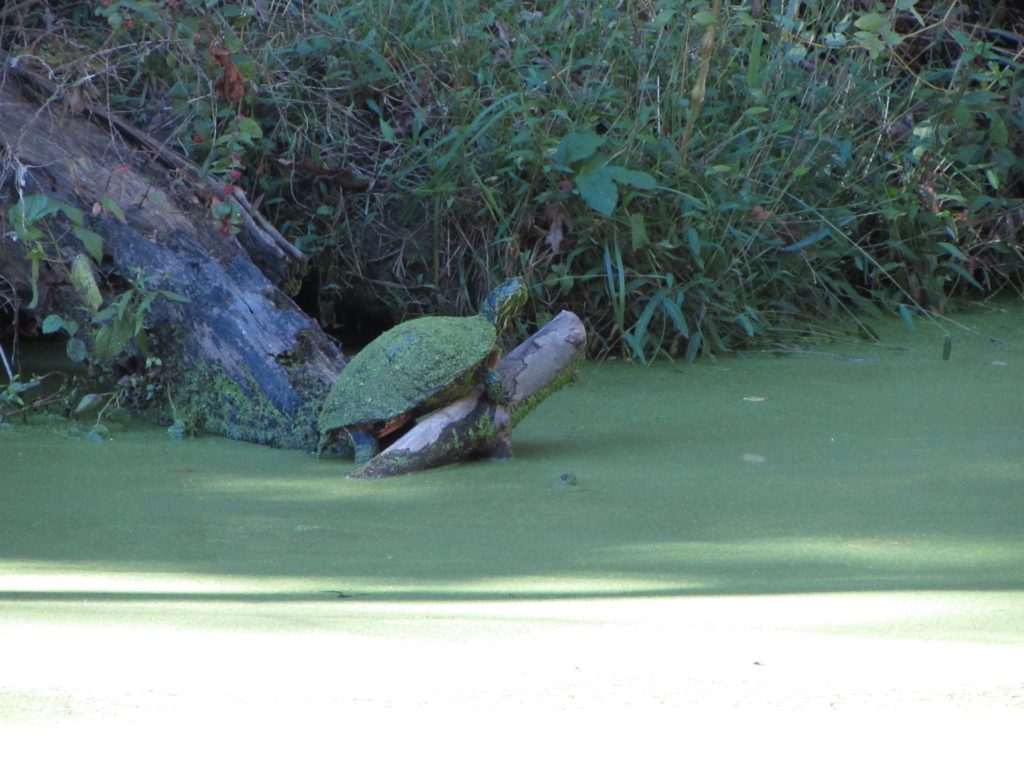
Tomorrow, May 23rd, is World Turtle Day, and you can celebrate along with us by learning more about these amazing creatures. For more kid-friendly info about turtles, the web has a wealth of resources. Try sites like LiveScience, Brittanica, and Scholastic. (Editor’s note: these sites do contain content referring to turtle evolution and existence “250,000,000 years ago,” etc.)
Learn more about many aspects of God’s creation
in Ms. Sam’s Nature Notes series!
